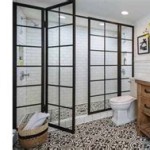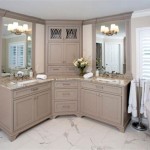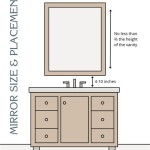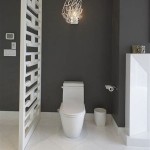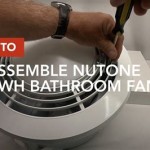Bathroom Vanity Plumbing Vent
A properly functioning plumbing vent is crucial for any bathroom, especially for vanities. Vents allow air to enter the drainage system, preventing pressure imbalances that can lead to slow draining or even sewer gas backups. Understanding how these vents work and their importance for your bathroom vanity is essential for maintaining a healthy and functional plumbing system.
Key Points About Bathroom Vanity Plumbing Vents
*
Prevent Slow Draining:
Air introduced through the vent system helps maintain proper pressure, allowing wastewater to flow smoothly down the drain. Without adequate venting, a vacuum can form, impeding drainage. *Eliminate Sewer Gas:
Plumbing vents direct sewer gases, which can be harmful and unpleasant, up and out of the home, preventing them from entering the bathroom through the vanity drain. *Protect the Water Seal:
Each plumbing fixture has a water trap, a U-shaped pipe that holds water to create a seal, blocking sewer gases. Vents regulate pressure to prevent siphoning, which can empty the trap and allow gases to escape.Common Types of Bathroom Vanity Vents
Several vent configurations can be implemented depending on the bathroom layout and plumbing design. Understanding these different types can be helpful when troubleshooting issues or planning a new installation.
Key Points About Different Vent Types
*
Common Vent:
A single vent pipe serves multiple fixtures. This setup is efficient and cost-effective but requires careful planning to ensure proper airflow. *Individual Vent:
Each fixture has its dedicated vent pipe that runs directly to the roof. This approach minimizes the risk of pressure imbalances but can be more expensive due to increased material and labor costs. *Wet Vent:
The drainpipe for one fixture also serves as the vent for another fixture downstream. This method conserves space and materials but is subject to specific code regulations. *Air Admittance Valve (AAV):
These mechanical vents are one-way valves that allow air to enter the drainage system when needed, eliminating the need for a traditional vent pipe in certain situations. However, local building codes may restrict their use.Signs of a Faulty Bathroom Vanity Vent
Recognizing the signs of a faulty vent system is crucial for addressing problems promptly. Ignoring these signs can lead to more severe issues down the line.
Key Points: Identifying Vent Problems
*
Gurgling Sounds:
Gurgling sounds coming from the vanity drain often indicate a venting issue, as air is struggling to enter the drainage system. *Slow Drainage:
If water drains slowly from the sink, it may be due to a partial or complete blockage in the vent pipe. *Sewer Gas Odor:
The presence of sewer gas in the bathroom is a clear indication of a venting problem, as the gases are not being properly directed out of the home. *Bubbling in Other Fixtures:
When flushing the toilet, if bubbles appear in the vanity sink, it could signify a shared vent issue affecting both fixtures.Maintaining Your Bathroom Vanity Vent
Regular maintenance can prevent many venting problems and ensure the longevity of your plumbing system. Simple preventative measures can save time and money in the long run.
Key Points on Vent Maintenance
*
Regular Inspection:
Periodically inspect the visible portions of the vent pipe for any signs of damage or blockage. *Clear Obstructions:
Leaves, debris, or even bird nests can obstruct the vent pipe on the roof. Ensure the termination point is clear for proper airflow. *Flush with Water:
Occasionally flushing the vent pipe with water can help dislodge minor blockages. *Professional Inspection:
For complex issues or concerns about the vent system, it's always recommended to consult a qualified plumber.Planning and Installation
Proper planning and installation are crucial for a well-functioning vent system. Key considerations during the planning phase can prevent future problems.
Key Planning and Installation Points
*
Local Building Codes:
Adhere to all local plumbing codes and regulations regarding vent pipe sizing, placement, and materials. *Proper Slope:
Ensure the vent pipe has the correct slope to facilitate proper airflow and prevent condensation buildup. *Material Selection:
Use appropriate piping materials, such as PVC or ABS, that are resistant to corrosion and designed for venting applications. *Professional Installation:
While some homeowners may be comfortable with basic plumbing tasks, vent system installation is often best left to a licensed professional to ensure code compliance and prevent future issues.By understanding the importance of bathroom vanity plumbing vents and taking proactive steps to maintain them, homeowners can ensure a properly functioning plumbing system and avoid costly repairs down the road.

How To Vent A Toilet Sink And Shower Drain

How Does Your Bathroom Sink Drain And Vent Pipes Work

How To Plumb A Bathroom With Multiple Plumbing Diagrams Hammerpedia

Vent Options For Plumbing Drains Fine Homebuilding

Plumbing Vents The Ultimate Guide Hammerpedia

Vent Options For Plumbing Drains Fine Homebuilding

Magic Vent

Plumbing Vents Common Problems And Solutions Family Handyman

Plumbing Vents The Ultimate Guide Hammerpedia

Image Result For Diagrams Of Plumbing Venting Bathroom Sink Kitchen
Related Posts

